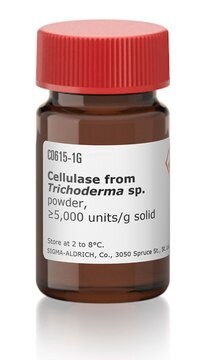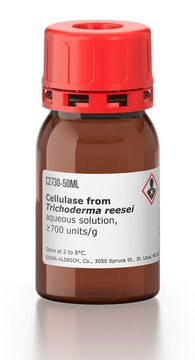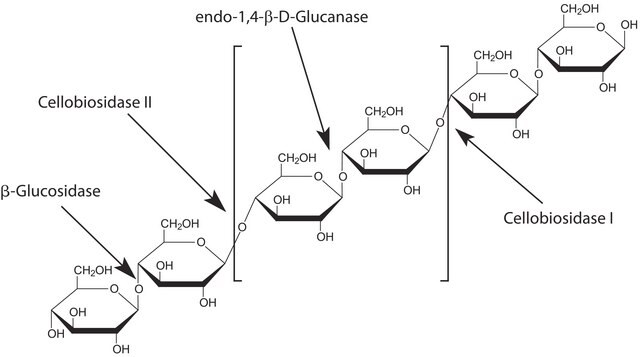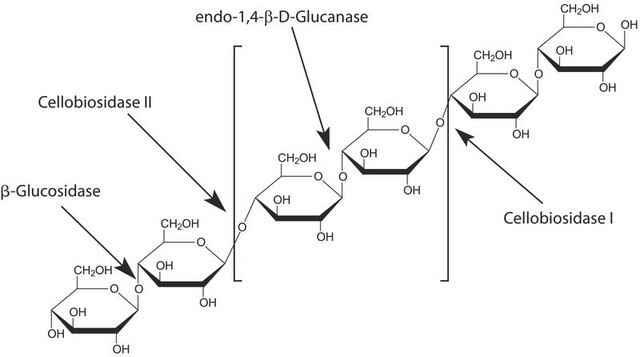C1794
Cellulase from Trichoderma sp.
BioReagent, suitable for plant cell culture, 3-10 units/mg solid
Synonym(s):
β-1,4-glucanase
About This Item
Recommended Products
biological source
fungus (Trichoderma sp.)
Quality Level
product line
BioReagent
form
powder
specific activity
3-10 units/mg solid
contains
maltodextrin
greener alternative product characteristics
Design for Energy Efficiency
Learn more about the Principles of Green Chemistry.
sustainability
Greener Alternative Product
technique(s)
cell culture | plant: suitable
application(s)
agriculture
greener alternative category
, Enabling
storage temp.
2-8°C
Looking for similar products? Visit Product Comparison Guide
General description
Application
Unit Definition
substrate
Signal Word
Danger
Hazard Statements
Precautionary Statements
Hazard Classifications
Resp. Sens. 1
Storage Class Code
11 - Combustible Solids
WGK
WGK 1
Flash Point(F)
Not applicable
Flash Point(C)
Not applicable
Personal Protective Equipment
Choose from one of the most recent versions:
Already Own This Product?
Find documentation for the products that you have recently purchased in the Document Library.
Customers Also Viewed
Protocols
To standardize an enzymatic assay procedure of cellulase.
Our team of scientists has experience in all areas of research including Life Science, Material Science, Chemical Synthesis, Chromatography, Analytical and many others.
Contact Technical Service








